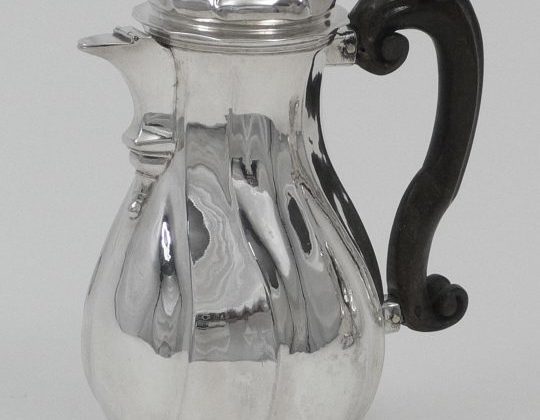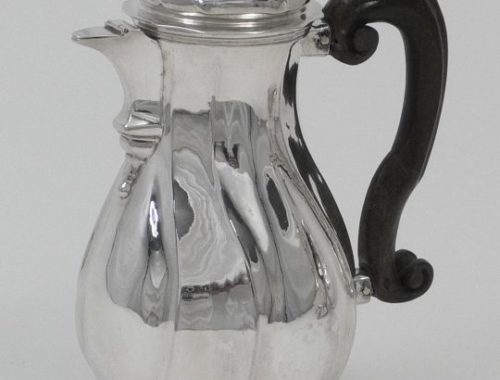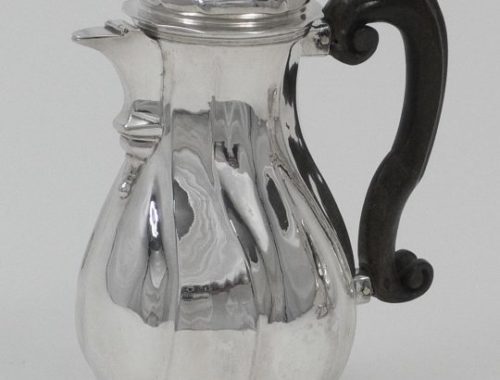Detailed Information
The present chocolatpot is an object made in Munich during the mid-18th century. On a high, round and flat foot is raised the body of the pot. The pear-shaped body is with twisted lines decorated. The spout is cast, has a hinged lid and is decorated on its lower part. The round, vaulted, hinged lid is decorated with gadrooned, twisted lines. The lid has a cast, ball-shaped, screw-knob. The ebony loop-handle is attached to the side and is decorated with volutes, while it has a thumb rest.
Drinking chocolate was established in Europe around the end of the 17th century. During this time, cacao, exactly like tea and coffee, were almost exclusively from doctors prescribed and was sold in pharmacies. However, these three new warms beverages had conquered the continent by the beginning of the 18th century, through the princely courts and the bourgeoisie.
The warm beverage was prepared with a mixture of cacao, sugar and water. Chocolate was an expensive beverage, because the primary materials were also expensive. In order to enjoy chocolate drinking and on the same time, show one’s elevated, aristocratic status, special services were made of silver and porcelain.
The chocolate pot has a screw-knob, so as to use the opening for a whorl. During the 18th century, cacao was to be drunk only when foaming stirred.
Maker: Joseph Grossauer was born in Vienna. His father was an iron hammer smith. Grossauer apprenticed by the master maker Mathes Franz. He got married to Maria, daughter of the goldsmith Franz Benedikt Leismüller, in Munich and was registered there as a master maker in 1717. Joseph Grossauer in mentioned in later years as a goldsmith by the court. Grossauer employed a great number of apprentices. Grossauer died in 1755 (Frankenburger 1912: 390-2).
Besides his civil works, many religious pieces of Grossauer are kept in important churches and museums in Munich and in Bavaria.
Literature:
Frankenburger, Max, Die Alt-Münchner Goldschmiede und Ihre Kunst, München: F. Bruckmann A.-G., [1912]
Remky, K. & Schäffer, G., Die Ernüchterung des Abendlandes: Kaffee und Tee erobern Europa, Kat. Ausst. 04.12.2010-20.03.2011, Aachen: Couven-Museum, 2010
Rosenberg, M., 1925, Der Goldschmiede Merkzeichen. Dritte, erweiterte und illustrierte Auflage, 3. Band/Deutschland N-Z, Frankfurt am Main: Frankfurter Verlags-Anstalt A.-G.




